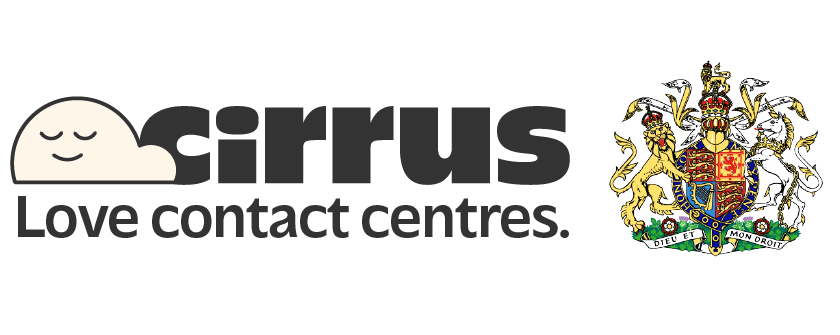What are customer experience metrics?
Customer experience metrics are measurable indicators that evaluate how people perceive and interact with a business. These metrics provide insights into satisfaction levels, ease of service, and emotional responses throughout the entire customer journey.
From a support call to a product return or website experience, these metrics help identify what’s working and what needs improvement. They are important for tracking the level of customer experience over a given time period and for aligning service quality with overall business goals.
Why customer experience metrics matter
Understanding how customers feel at every stage of their journey helps businesses shape more positive experiences, reduce churn, and increase customer retention. These metrics are about listening to the customer voice, identifying customer concerns, and taking action to resolve them quickly.
Tracking customer experience KPIs also allows organisations to:
- Benchmark business performance
- Improve contact resolution time
- Align customer service teams with business KPIs
- Deliver a more personalised experience
- Guide product offerings based on feedback
When used consistently, experience metrics support better customer experience management and drive long-term loyalty.
Common customer experience metrics
Here are some of the most widely used and recognised metrics:
Net Promoter Score (NPS)
NPS measures how likely customers are to recommend a brand. It uses a simple rating scale, categorising respondents into promoters, passives, or detractors. It’s a strong indicator of customer loyalty and an early sign of potential churn.
Customer Satisfaction Score (CSAT)
This metric captures how satisfied customers are with a specific interaction, often using a 5-point or 10-point scale. It offers direct feedback and is useful for measuring the effectiveness of customer service after a support event.
Customer Effort Score (CES)
CES assesses how easy it was for a customer to complete a task, such as getting support or making a return. Low effort often correlates with positive customer experiences and improved retention rates.
Average Handle Time (AHT)
While operational in nature, AHT influences the customer perception of service speed. Longer interactions may indicate complex issues or process inefficiencies.
First Contact Resolution (FCR)
FCR reflects how often issues are resolved on the first try. High FCR means fewer follow-up calls and is closely linked to customer satisfaction levels.
Customer Churn Rate
This tracks the percentage of customers who stop using a service within a time frame. Monitoring churn alongside engagement metrics helps predict risk and shape retention strategies.
Examples of customer experience measurement metrics
In practice, businesses may track:
- Average response times
- Resolution time per query
- Distribution of scores in surveys
- Customer referral rate
- Customer lifetime value (CLV)
- Customer renewal rate
- Abandonment rate in digital channels
- Sentiment trends across touchpoints
These are often presented in customer experience dashboards, allowing teams to analyse trends, compare performance, and evaluate both direct and indirect feedback.
To understand how dashboards connect with real-time operations, you can explore solutions for workforce optimisation and agent support in contact centres.
How to measure customer experience metrics effectively
Use customer surveys
Simple surveys after a service touchpoint capture customer feedback when it’s most relevant. These can be deployed by chat, email, or phone and include a mix of effort questions, satisfaction scores, and follow-up questions.
Enable CRM integration
Linking metrics to a central CRM helps create a unified view of the entire relationship. This also supports customer service representatives with context for future inquiries.
Apply real-time analytics
Live dashboards help supervisors and support leads respond to changes in sentiment or satisfaction instantly. For example, a spike in negative experience reports may signal a broken feature or knowledge gap.
Combine direct and behavioural data
While surveys are a direct measure, platforms can also track user behaviour, such as navigation patterns, dwell time, or feature adoption, offering invaluable insights into experience.
Customer journey analytics tools, especially those integrated into an omni-channel contact centre solution, offer a well-rounded view across digital and live channels.
Where experience metrics drive value
Contact centres
Supervisors use metrics to evaluate customer service interactions, identify key touchpoints, and improve agent workflows. Integrated analytics help teams adapt fast, especially when using contact centre tools for in-the-moment guidance.
Retail
In retail, metrics inform service improvements, checkout design, and support experiences. Tracking purchase frequency, customer demographics, and satisfaction by channel is common.
Higher education
Higher education institutions use experience data to shape admissions journeys, student support, and communication preferences.
Housing and public services
Experience metrics support faster resolution and stronger trust between residents and providers. Housing teams benefit from integrated support platforms, as shown in housing-specific solutions.
BPOs and outsourced services
Experience data ensures SLAs are met and client satisfaction stays high. To manage high-volume operations, many BPOs turn to scalable contact centre solutions that track both metrics and agent performance.
Managing customer experience metrics at scale
To manage experience metrics successfully, organisations need a clear framework more than data:
- Define customer experience goals for each department
- Link metrics to tangible business outcomes
- Regularly review data and explore deeper patterns with the product team or service leads
- Identify key drivers of poor experiences and refine processes accordingly
- Use metrics to improve employee satisfaction and align internal KPIs
Platforms that support CRM integration, team collaboration, and role-based reporting help you drive every metric into action. For example, Microsoft Teams integration enables real-time discussion of trends and escalations.
Accessibility in customer experience measurement
Inclusive measurement means ensuring every customer can participate. Surveys and feedback tools should be accessible to users with disabilities, support multiple languages, and cater to varying levels of digital literacy.
Organisations that incorporate accessibility into survey design and support tools see more accurate results and better service equity.
Advanced customer experience measurement techniques
As customer expectations grow, businesses turn to more advanced methods like:
- Customer journey maps to understand interactions across a lifecycle
- Behavioural metric tracking for user journey analysis
- AI-based sentiment evaluation for deeper emotional insight
- Predictive modelling to forecast churn rates or loyalty shifts
- Combining digital customer experience data with live support feedback
- Analysing the emotional intensity of comments across voice and chat
- Linking CX to return on investment or cost savings
These methods allow organisations to move from reactive feedback to strategic improvement.
Frequently asked questions
What are customer experience metrics?
They are measurable indicators that evaluate satisfaction, loyalty, and ease of service across a customer’s relationship with a business.
How do you manage customer experience metrics?
You can manage with integrated dashboards, CRM tools, and regular review cycles tied to business goals. Basically, metrics should influence both strategy and day-to-day decision-making.
What are examples of customer experience metrics?
Some of the examples of customer experience metrics are NPS, CSAT, CES, AHT, churn rate, retention rate, resolution time, and survey participation rates.
Can experience metrics impact business success?
Yes. Metrics guide improvements in service, retention, and loyalty. They are the key contributors to growth and competitive advantage.
What tools support CX measurement?
Tools range from CRM systems and survey platforms to AI-based analytics, journey tracking systems, and contact centre platforms.
Final thoughts
Tracking customer experience metrics is about developing enjoyable customer relationships, enhancing service delivery, and driving meaningful business change. From frontline support to strategic planning, these metrics connect the customer voice to measurable progress.
Whether you’re monitoring the ease of a single interaction or the quality of the entire journey, integrating smart CX measurement into your operations can elevate service, reduce churn, and support long-term business growth.
To explore how customer experience metrics fit into your support strategy, start with a contact centre solution that offers built-in analytics, dashboards, and CRM. Or, if you’re ready to take the next step, you can request a demo and see it in action.
Your Contact Centre, Your Way
This is about you. Your customers, your team, and the service you want to deliver. If you’re ready to take your contact centre from good to extraordinary, get in touch today.


